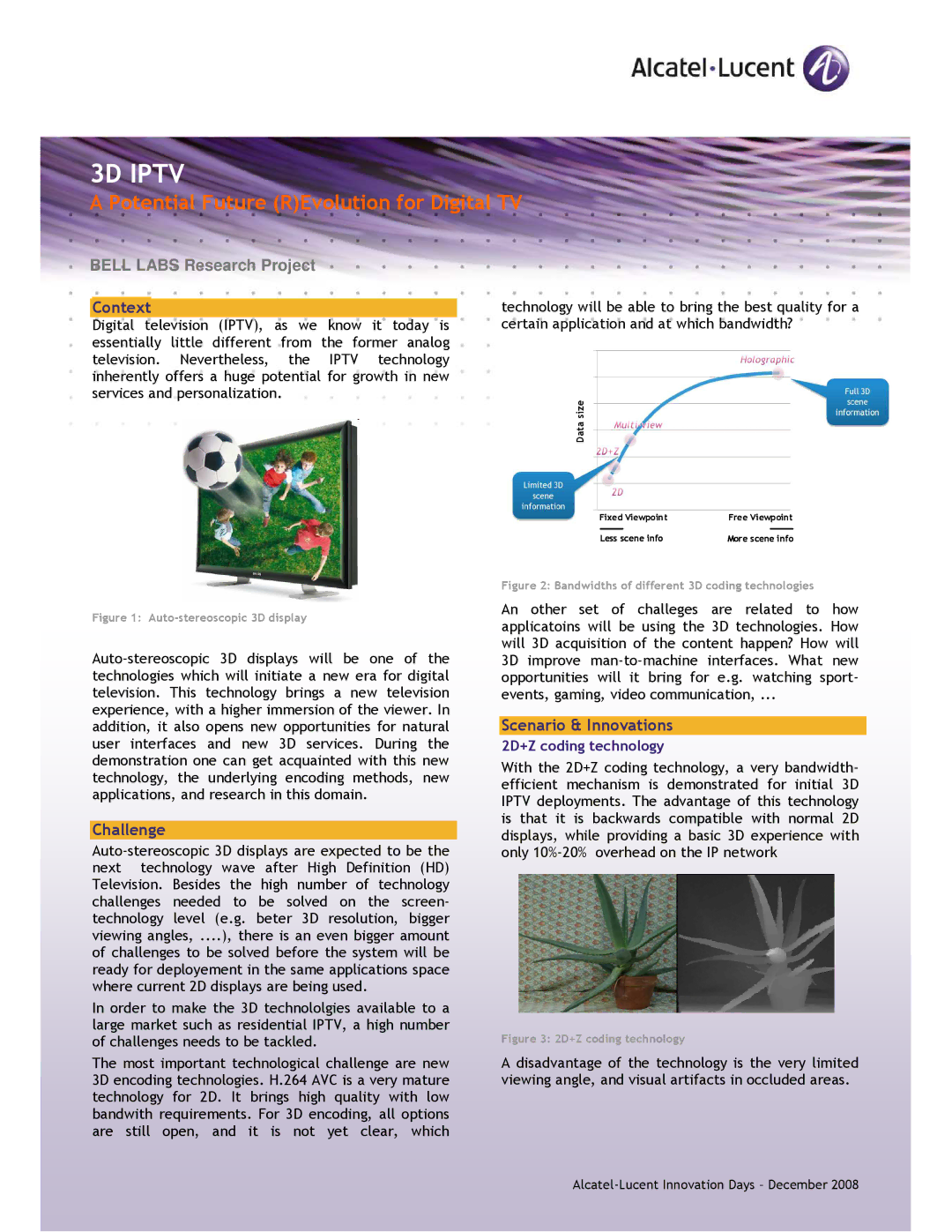
3D IPTV
A Potential Future (R)Evolution for Digital TV
BELL LABS Research Project
Context
Digital television (IPTV), as we know it today is essentially little different from the former analog television. Nevertheless, the IPTV technology inherently offers a huge potential for growth in new services and personalization.
Figure 1: Auto-stereoscopic 3D display
Challenge
of challenges to be solved before the system will be ready for deployement in the same applications space where current 2D displays are being used.
In order to make the 3D technololgies available to a large market such as residential IPTV, a high number of challenges needs to be tackled.
The most important technological challenge are new 3D encoding technologies. H.264 AVC is a very mature technology for 2D. It brings high quality with low bandwith requirements. For 3D encoding, all options are still open, and it is not yet clear, which
technology will be able to bring the best quality for a certain application and at which bandwidth?
Data size
Fixed | Viewpoint | Free Viewpoint | |
|
|
|
|
Less scene info | More scene info | ||
Figure 2: Bandwidths of different 3D coding technologies
An other set of challeges are related to how applicatoins will be using the 3D technologies. How will 3D acquisition of the content happen? How will 3D improve
Scenario & Innovations
2D+Z coding technology
With the 2D+Z coding technology, a very bandwidth- efficient mechanism is demonstrated for initial 3D IPTV deployments. The advantage of this technology is that it is backwards compatible with normal 2D displays, while providing a basic 3D experience with only
Figure 3: 2D+Z coding technology
A disadvantage of the technology is the very limited viewing angle, and visual artifacts in occluded areas.
